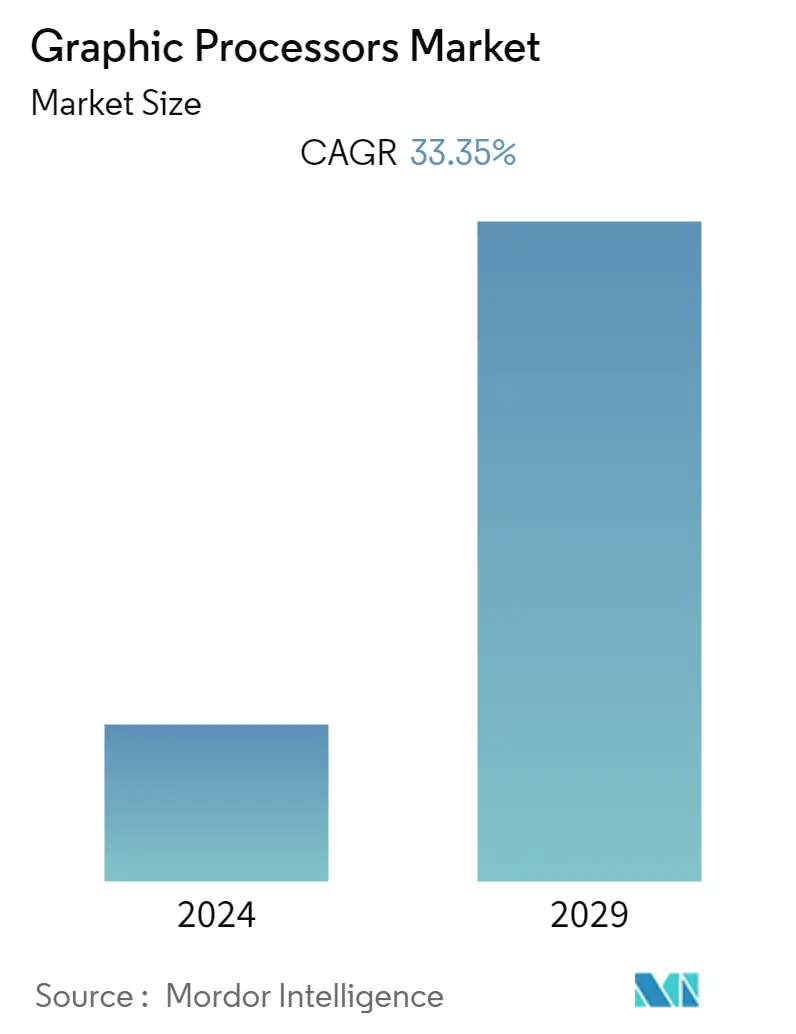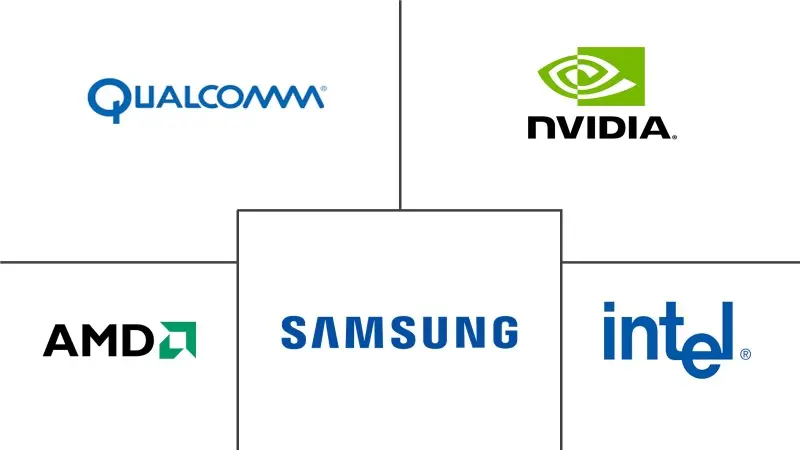Market Size of Graphic Processors Industry

| Study Period | 2019 - 2029 |
| Base Year For Estimation | 2023 |
| CAGR | 33.35 % |
| Fastest Growing Market | Asia Pacific |
| Largest Market | North America |
| Market Concentration | High |
Major Players
*Disclaimer: Major Players sorted in no particular order |
Need a report that reflects how COVID-19 has impacted this market and its growth?
Graphic Processors Market Analysis
The graphic processors market is expected to register a CAGR of 33.35% over the forecast period. According to the ITA, the United States media & entertainment industry is expected to reach more than USD 825 billion by next year. The industry's rapid growth will trigger the adoption of desk-based PCs and tablets with high-end graphics cards and processors to enhance the gaming experience.
- The market for gaming applications is rising due to increased consumer spending on tablets, smartphones, and notebooks, driving the demand for graphics processors to provide high-quality visual effects and high-speed gaming applications.
- The factor fueling the graphic processor market's growth is the increasing usage of processors to support graphics applications and 3D content in various industry verticals such as manufacturing, automotive, real estate, and healthcare. For instance, to support manufacturing and design applications in the automotive sector, CAD and simulation software leverages GPUs to create photorealistic images or animations.
- The rise of geographic information systems (GIS) and immersive multimedia are also driving the graphics processing market. Increasing usage of applications such as GIS that provide real-time spatial and geographical data is rising owing to the penetration of smartphones, tablets, and other mobile computing devices. A GIS allows users to generate a query, analyze spatial information, map data, and provide output. However, to provide real-time information, mobile computing devices incorporate graphic processors on a large scale.
- The metaverse offers an enhanced experience. Many activities people can perform in the real world are also possible in this virtual representation of the real world. The software will need to advance to support this because interoperability between platforms, applications, and services will be essential for a working ecosystem. Hardware will be essential to allow people to interact with this new online environment, despite software being an important pillar in the convergence of different realities.
- With full-body haptics and virtual reality equipment still available, AR and VR technologies will likely be the primary ways of experiencing the metaverse during the transition. This offers enormous potential for the electronics sector, particularly from the perspective of GPUs, to spearhead widespread innovation that will aid in immersing users while utilizing parallelism to address data issues.
- Moreover, the inability to properly balance system performance, efficiency, and power consumption poses a challenge to market growth. Further, declining workstation sales may hamper the graphic processors' market growth over the forecast period.
